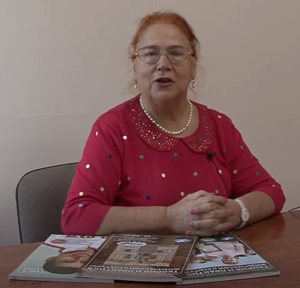Comparative characteristics of anthropometric and bioimpedancemetric indicators of highly qualified wrestlers and boxers of Yakutia
ˑ:
Dr. Med., Associate Professor A.B. Guryeva1
PhD V.A. Alekseeva1
Dr. Med. A.S. Golderova1
N.V. Ksenofontova2
1M.K. Ammosov North-Eastern Federal University, Yakutsk
2Medical center of Yakutsk
Objective of the study was to identify the features of anthropometric and bioimpedancemetric indicators of highly qualified wrestlers and boxers from Yakutia.
Methods and structure of the study. 49 male athletes participating in the Republican Center for Sports Training of National Teams of the Republic of Sakha (Yakutia) took part in the scientific work. Of these, 36 athletes were engaged in freestyle wrestling, 13 – boxing. Body length and weight, chest circumference, waist and hips were measured. The bioimpedance study included the determination of active and reactance resistance and body components: fat mass, active cell mass, skeletal muscle mass, lean mass of athletes.
Results and conclusions. Athletes involved in freestyle wrestling showed significantly higher indicators of body weight, body mass index, hip circumference and chest circumference, and the absolute amount of skeletal muscle and lean mass. Frequency analysis of BMI determined the presence of overweight and obese individuals among the wrestlers. Among the boxers, there were no overweight or obese individuals based on BMI. According to the bioimpedance study, significantly higher rates of active and reactive resistance were found in boxers due to reduced body hydration. The resulting anthropometric and bioimpedance metrics provide valuable scientific data that can be used to improve the effectiveness and individualization of training, weight management and improve the overall performance of athletes involved in freestyle wrestling and boxing.
Keywords: anthropometry, bioimpedancemetry, wrestlers, boxing, Yakutia, body components.
References
- Vybornaya K.V. Somatotipologicheskiye kharakteristiki sportsmenov razlichnykh vidov sporta [Somatotypological characteristics of athletes of various sports]. Sportivnaya meditsina: nauka i praktika. 2022. Vol. 12. No. 3. pp. 14-29.
- Isaev A.P., Erlikh V.V., Shevtsov A.V., Bychkovskikh V.A., Korableva Yu.B. Integralnyye kriterii sistemoobrazuyushchikh faktorov funktsionalnoy sistemy organizma sportsmenov vysokoy sportivnoy kvalifikatsii raznykh vidov sporta [Integral criteria of system-forming factors of the functional system of the body of highly qualified athletes of different sports]. Chelovek. Sport. Meditsina. 2021. Vol. 21. No. 2. pp. 7-18.
- Nikolaev D.V., Rudnev S.G. Sostav tela i bioimpedansnyy analiz v sporte (obzor) [Body composition and bioimpedance analysis in sports (review)]. Sportivnaya meditsina: nauka i praktika. 2012. No. 3. pp. 34-41.
- Panchenko I.A., Simakov A.M., Tkachuk M.G., Alekseeva N.D. Polovyye razlichiya morfofunktsionalnykh priznakov u lits, zanimayushchikhsya yedinoborstvami [Gender differences of morphofunctional signs in persons engaged in single combats]. Teoriya i praktika fizicheskoy kultury. 2023. No. 3. pp. 93-95.
- Popova E.V., Khomyakova I.A., Zadorozhnaya L.V., Gundegmaa L., Otgon G., Bondareva E.A. Morfofunktsionalnyye kharakteristiki altaytsev i mongolov, spetsializiruyushchikhsya v volnoy borbe [Morphofunctional characteristics of Altaians and Mongols specializing in freestyle wrestling]. Zhurnal mediko-biologicheskikh issledovaniy. 2020. Vol. 8. No. 4. pp. 385-393.
- Tseslinski I. Antropometricheskiye profili i sostav tela silneyshikh polskikh bortsov klassicheskogo stilya [Anthropometric profiles and body composition of elite polish senior greco-roman wrestlers]. Teoriya i praktika fizicheskoy kultury. 2020. No. 7. pp. 69-71.



